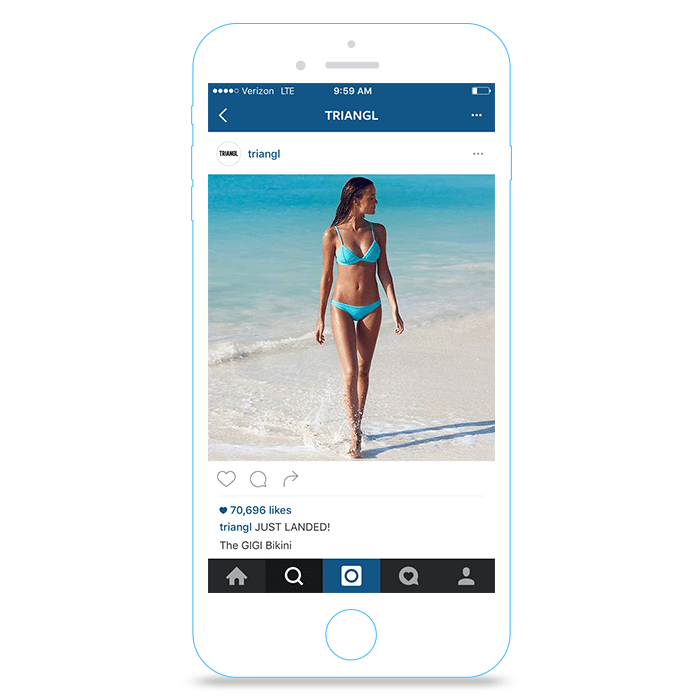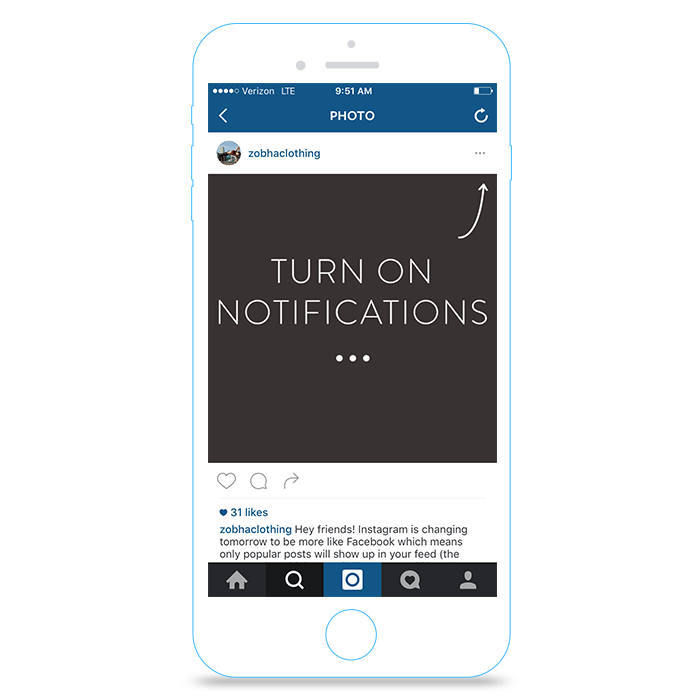Instagram announced it would change its algorithm to prioritize important posts, rather than continue to show images and videos in reverse chronological order like they have been since the app launched in 2010. With this sudden uncertainty, panic ensued and questions soon poured in.
In just six years, Instagram has grown larger than Twitter, with over 400 million users to Twitter’s 320 million. According to Forrester, the photo- and video-sharing app drives more engagement than any other network, with users liking, reposting and commenting on images from their friends, favorite celebrities, and a growing number of brands and companies.
With clever use of hashtags and a comment feature which allows you to tag friends so they see a post, Instagram has helped many brands make steep gains in popularity. Australian ecommerce swimwear company Triangl gained nearly three million followers on Instagram by posting racy pictures of women wearing their bikinis. Triangl continued to boost sales by asking influencers and fashion-minded ‘grammers to model their bikinis. They also lucked out when Miley Cyrus posted a picture wearing a Triangl suit. This method has helped the company boost sales dramatically—from $5 million to $25 million in just two years.
It’s easy to understand why brands would be concerned at the prospect of an algorithm change. Many companies have asked followers to turn on notifications to alert them to new posts. Some especially panicked companies have launched a Change.org petition to keep the chronological feed.
Here’s what we know about the changes so far: According to Instagram, users miss 70 percent of their feed. The change is an effort to show the pictures users want to see first. The new algorithm hasn’t gone into effect for everyone yet and is s currently being tested on select users. Instagram promises it’ll let everyone know when the change is going to happen. When it does, users can expect to see several prioritized pictures first, then the rest of their feed in reverse chronological order.
Is the new Instagram algorithm change a reason for brands to be concerned, or could it actually be a positive change? We can look to Facebook for some clues.
Facebook’s big changes
Facebook’s algorithm has changed a number of times since News Feeds launched in 2006. By 2012, Facebook announced that organic posts reached just 16 percent of a brand page’s fans. They then rolled out sponsored posts, which replaced “fan” ads. This introduced the “pay-to-play” model.
Instagram (owned by Facebook since 2012) could easily mimic this model.However, its leaders promise that this change is not a step in the pay-to-play direction; rather, they’re just showing users what they want to see.
So, what are the possible benefits of this update?
First things first, Instagram has promised it’s not omitting content, just reorganizing it. If your posts are already engaging, you probably don’t have anything to worry about. It could actually be better for your brand if Instagram serves your content first. As people try to limit their social media browsing, this update is meant to put the most important information first.
As we mentioned, many brands are asking users to turn on notifications so they’re alerted every time an Instagram account posts a picture or video. Many users will do this if they really like a brand, which could boost engagement. Other users may be unhappy with brands’ requests and be moved to unfollow.
However as marketing guru Gary Vaynerchuk, founder of renowned social-media focused digital agency VaynerMedia, pointed out, these unhappy followers were probably not engaged in the first place. Users who unfollow a brand during this time can cleanse feeds and improve engagement metrics.
What are the possible cons?
Right now, many brands feel like they need to post highly-engaging images and videos to ensure their followers stick around, which could turn Instagram into a popularity contest. In addition, many brands asking followers to turn on notifications may backfire. The constant buzz of a new image or video post could drive some users to abandon a brand’s Instagram feed completely.
Brands whose followers don’t engage with images and videos (though still may appreciate the content as they scroll by) will see the effects most noticeably. Brands that use Instagram for special promotions may also find it harder to reach their audiences, forcing some to buy ads to achieve goals.
The change will also hamper discovery, making it more difficult to find new, up-and-coming brands or those with fewer followers. This could pose a problem for smaller brands who rely on the free reach of Instagram. There will be fewer stories like Triangl and Taylor Stitch, who grew their business in large part due to the network.
Final thoughts
Instagram’s upcoming change feels like it works in users’ favors, and may make it slightly more difficult for brands (especially small ones) to reach new users. However, if you’re following best practices, you don’t have much to worry about. Keep your content fresh and audience-focused and continue using interesting hashtags for discovery. Keep tabs on your metrics and mimic posts and times when you have the most success. Only time will tell how this change will truly impact brands.
Cheryl Amaya is Client Success Manager for WebLinc



